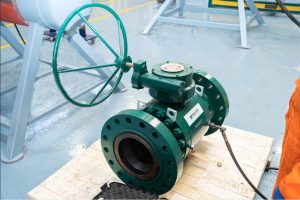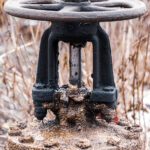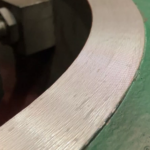Valve Maintenance – Proactive Versus Reactive Repair
Valves serve as silent sentinels, controlling the flow of liquids, gases, and other substances in the complex web of industries that power our modern world. We all know these elements play a crucial role. However, did you ever wonder about the importance of valve maintenance? Yes, an essential practice for ensuring the longevity and best functionality of valves is called valve maintenance. In this context, we can talk about the value of maintenance, the distinction between proactive and reactive methods, and the numerous benefits of engaging professional valve maintenance services.
Valve Maintenance: A crucial requirement
The complex process of valve maintenance, which requires routine inspections, meticulous testing, and diligent servicing, is crucial for ensuring peak performance and prolonged lifespan of valves. Valves act as unsung heroes in various industries, such as manufacturing, petrochemicals, and water treatment. These valves are needed to prevent potentially adverse disruptions.
Proactive vs. Reactive Maintenance
1. Proactive Maintenance
A recent US government report claims that compared to reactive maintenance, proactive maintenance results in cost savings of 30-40%.
The concept of proactive maintenance places a strong emphasis on planning and forward thinking. It includes a routine of systematic checks and preventative repairs meant to spot emerging problems and address them before they become major obstructions. Utilizing maintenance services is a tactical way to spot unforeseen breakdowns, preserving continuous operation and securing costly continuity.
2. Reactive Repair
Reactive repair, on the other hand, takes place as a response-driven strategy and is only utilized when a valve fails completely or malfunctions. While quick, this approach frequently results in longer production downtimes, higher repair costs, and unintentional increases in safety risks. Even though they are necessary, reactive repairs typically require more time and resources due to proactive maintenance’s inherent foresight.
Benefits of Proactive Valve Maintenance
The following are the main advantages of adopting preventative valve maintenance:
- Downtime Mitigation: Proactive maintenance’s ability to stop latent problems ultimately prevents unanticipated shutdowns. This procedure effectively reduces production downtime and its associated financial consequences by anticipating potential problems.
- Economical Factor: Economics favors being proactive. Resource allocation for planned maintenance eliminates the need for intricate repairs or rash replacements, resulting in immediate, significant cost savings.
- Heightened Safety Measures: In modern industrial settings, regular inspections and thorough maintenance are the cornerstones of strengthened safety standards. The lack of governance increases the number of accidents and the potential ecological emergencies that uncontrolled valve malfunctions might cause.
- Longer Equipment Lifespan: Proactive maintenance not only addresses current issues however, it also ensures that valves are functioning at their peak efficiency, extending the valves lifespan and reducing the frequency of replacement.
- Enhanced Operational Efficiency: The correlation between operational efficiency and properly maintained valves is visible proof. If valves work optimally, you can see improvement in the system’s overall performance and a reduction in operational costs.
On-Line Valve Flushing, Lubrication, and Sealing
This involves the on-line flushing of valves to remove old lubricant/sealant and hydrocarbon deposits and the subsequent injection of specially formulated lubricants to enhance and protect your valves – and provide many years of extended trouble-free service.
The integrity of the valves is compromised when foreign debris produce tiny scratches on the polished ball surface and wears on the ball and seat during the cycling of the valve. This reduces the valve’s ability to provide an adequate seal and begin to cause minor leak paths.
This maintenance service, delivered by our expert teams of qualified supervisors and technicians, includes:
- On-line flushing of valves to remove old lubricant/sealant and hydrocarbon deposits.
- Subsequent injection of specially formulated lubricants to enhance and protect expensive valves, providing many more years of extended, trouble-free service.
On-line valve sealing involves injecting sealant into the upstream ball valve seal area while the valve is closed to permit isolation. The efficiency of the seal can be evaluated after injecting the upstream seal by depressurizing the downstream and monitoring the downstream pressure gauge.
Conclusion
Maintaining valve performance is more than just a routine task for the workplace; it now occupies the position of a crucial instrument in industrial process optimization. Beyond simple operational considerations, the decision between proactive and reactive maintenance has a significant impact on a company’s financial resonance.
Wellube offers both reactive as well as Planned Preventive Maintenance (PPM) packages, these include online flushing, lubrication, and sealing solutions on valves. Wellube’s experience and technical knowledge alongside our on-line valve maintenance method is a complete solution to your valve reliability management and asset integrity needs.







